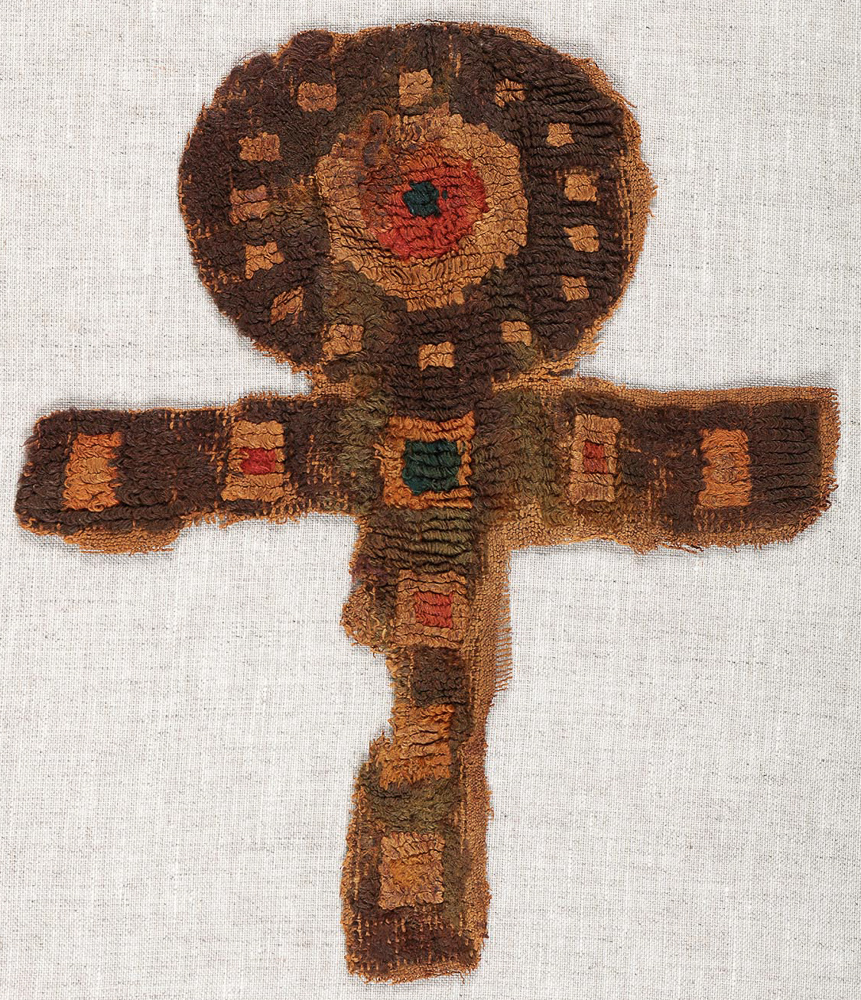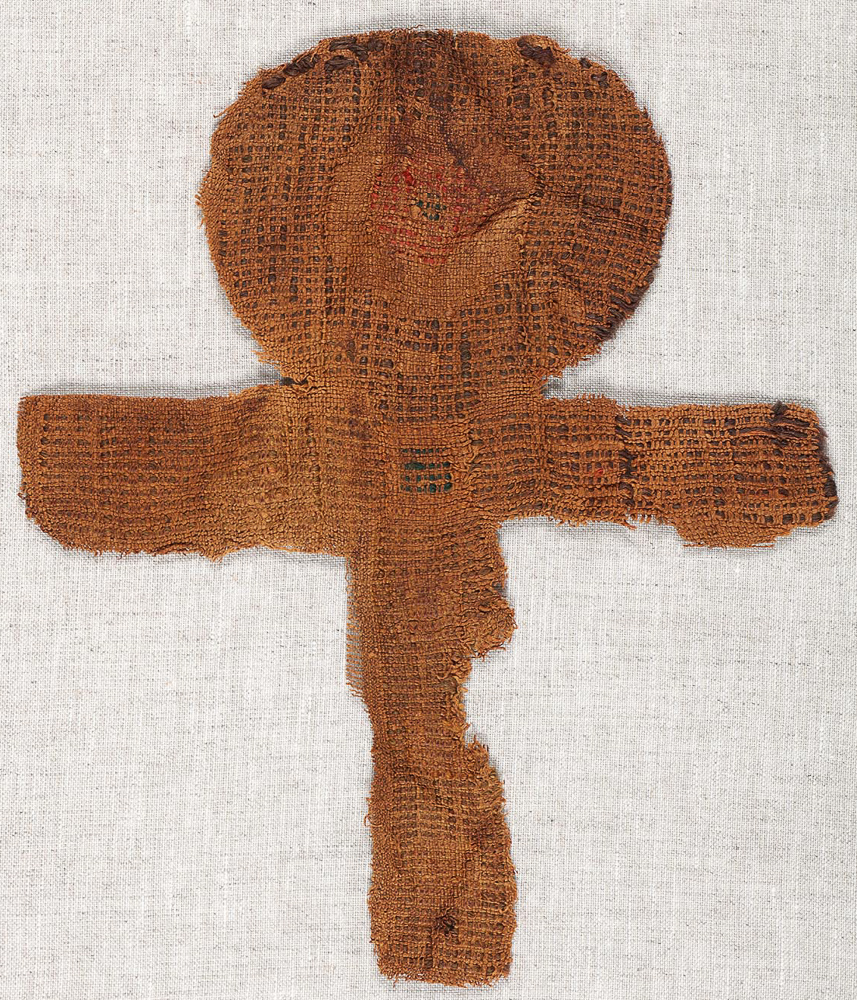A crux ansata with imitations of cabochon stones. Certainly part of a wall hanging. In the shape of the hieroglyph ankh, meaning life, this cross was adopted by Christians in Egypt to represent Christ’s cross and as the symbol of immortality and rebirth.
Origin:
Egypt
Date:
3rd - 5th century
Material:
Linen and wool
Dimensions:
Warp: 21 cm, weft: 17.5 cm
Comparisons:
State Hermitage Museum, inv. 11591.
Pushkin Museum, inv. 5819.
RMAH, Brussels, inv. ACO.Tx.0290.
Gemeentemuseum Den Haag, inv. X 4447.
Staatliche Museen zu Berlin, inv. 9212 and 9236.
The same decorative part can be found in painting, such as in the Coptic monasteries of Kellia, dating from the end of the 6th century.
Provenance:
Collection Coptic textiles Fill-Trevisiol: donation
Location:
Musée royal de Mariemont
Motif cut out from a linen fabric with linen and woollen loops
I. Ground weave
Warp:
natural-coloured linen S: 22/cm
Weft:
natural-coloured linen S: 9/cm
II. Pile areas
Special techniques:
weft loops: only one linen pick between the loops; in pick with loops: 1 linen yarn/pick; wool loops: paired yarns: brown, red, blue and orange: only one warp between the loops: very dense; linen loops: only one warp between the loops: very dense

